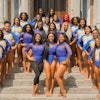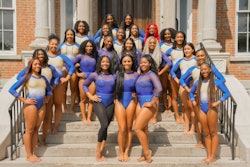Cornerback is generally regarded as the position in the National Football League (NFL) where some of the fastest and most athletic players are placed. The position requires tremendous forward, backward, and lateral speed and quickness. It requires one to defend wide receivers that may have speed that approaches the level of Olympic track athletes.
The last White cornerback to start a game in the NFL was Jason Sehorn and he retired at the end of the 2003 season. Let’s unpack some potential reasons for this and what lessons can potentially be applied to higher education.
Stereotypes certainly play a key role. White players in some quarters are stereotyped as not having the requisite speed and quickness to be able to excel at the cornerback position. This likely prevents young White players from attempting to play the position, coaches from placing them in the position and college recruiters from recruiting them to play the position.
The stereotype is so dominant that many young players likely remove themselves from the competition for spots before it even begins. This is an example of the kind of psychological consequences that deeply embedded stereotypes can have.
LaVar Ball, the father of former UCLA star freshman point guard Lonzo Ball, recently made headlines by saying after UCLA’s loss to Kentucky in the NCAA Basketball Tournament that “realistically you can’t win no championship with three White guys because the foot speed is too slow.”
He verbalized openly what many people may have thought, but only discussed privately. It would be hard to gauge the internal and external impact of this stereotype on White players who aspire to play positions in the NBA and NFL that require elite foot speed in order to excel.
There is a presumption of slowness for White players that exists in the minds of many. They often have their ability questioned more frequently and are scrutinized more harshly when competing for positions and playing time. These stereotypes represent powerful identity contingencies that aspiring White cornerbacks have to face.
They are frequently typecast as just being suitable positions like “shooters” in basketball and “linemen” in football. They usually have to go above and beyond to prove themselves worthy. Black athletes are often given the benefit of the doubt in the area of speed and quickness. Slower Black players are often perceived to be quicker than they really are. This represents an implicit bias in the minds of many toward Black players in the area of pure athleticism.
The paucity of White cornerbacks represents the reverse of almost every other area of the country including most institutions of higher education. The situation is flipped for the vast majority of domains in the rest of society. Black people, especially Black men, are often valued for athletics and entertainment, but little else. An argument can be made that this has largely been the case at several universities.
Some of the numbers from a University of Pennsylvania report entitled “Black Male Student-Athletes and Racial Inequities in NCAA Division I College Sports” suggest that the primary recruitment mechanisms for Black males may be their football and basketball teams for many universities. The report “found that black men were 2.8 percent of undergraduate students but 57.1 percent of football players and 64.3 percent of basketball players across the 77 major sports programs.”
What if minorities were given the same benefit of the doubt and presumption of competence in other areas of life? What if there were more models of excellence in areas outside of sports and entertainment that were highlighted and celebrated? What if young scholars of color were pursued and recruited with the same intensity that prized athletes of color are?
Unfortunately, for Blacks, professional careers in athletics represent an incredibly small percentage of the ways that people earn a living. In most other career paths, microaggressions, implicit bias and negative stereotypes present significant barriers to progression.
Every day, doors of opportunity are opened or closed based on the stereotypes of one’s particular group. It is like a shadow that follows people everywhere they go. These stereotypes often lead to people formulating particular expectations about students and/or faculty at colleges and universities can do and where they should be placed.
There has been a great deal of discussion about glass ceilings, but even more often minorities experience glass doors. They can’t even get in the door when it comes to securing faculty positions, for example, in spite of their Ph.Ds. Studies suggest that they have been locked out of high-level positions at many institutions of higher education and corporation.
Like the White cornerback, minorities often face an increased level of scrutiny. The may have to be two or three times as qualified to get an opportunity. There may be limitations placed on how high they can go and how many of them are allowed access to certain roles.
These additional barriers, combined with an environment that is sometimes discouraging, can create a destructive impact on these who are enduring it. When they dare to bring these issues up, students and faculty of color are frequently subject to experience microinvalidations that are cumulative in nature. Microinvalidations are those times when their racial realities are dismissed, nullified and negated. As a result, the issues are likely to never be addressed in a holistic manner.
Hopefully, the plight of the White cornerback can shed light on the experience of minority groups in almost every other sector of society. The blueprint to broaden avenues of access, diversity and inclusion exists in basketball and football. It needs to be utilized for other areas of life, including higher education.
Dr. Marcus Bright is a political commentator and the executive director of Education for a Better America. He also serves as an adjunct professor of public administration and political science at Lynn University.




















